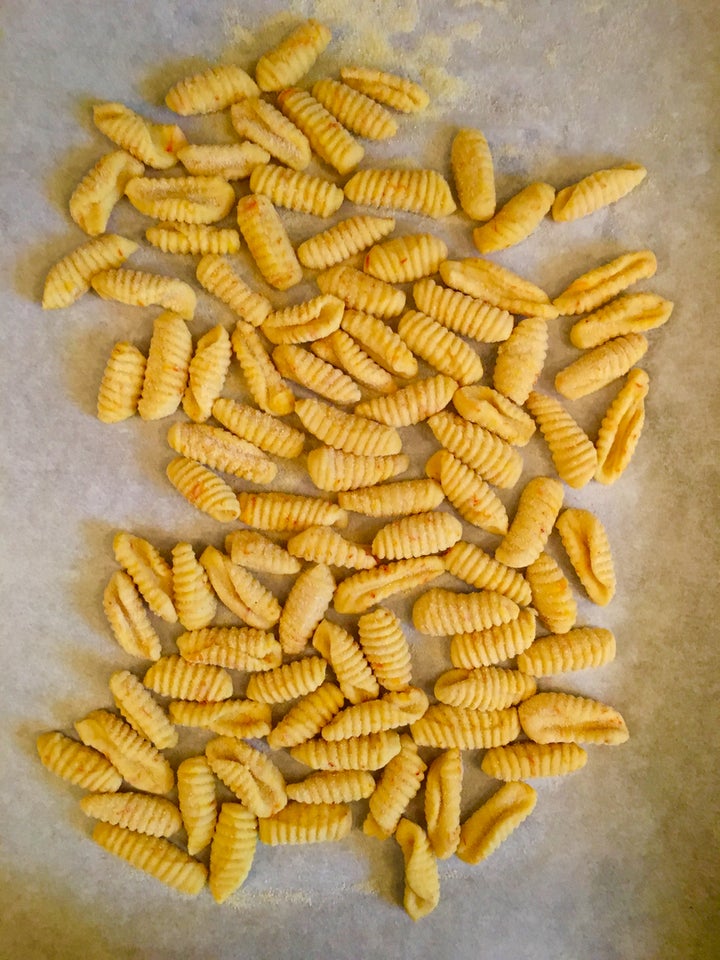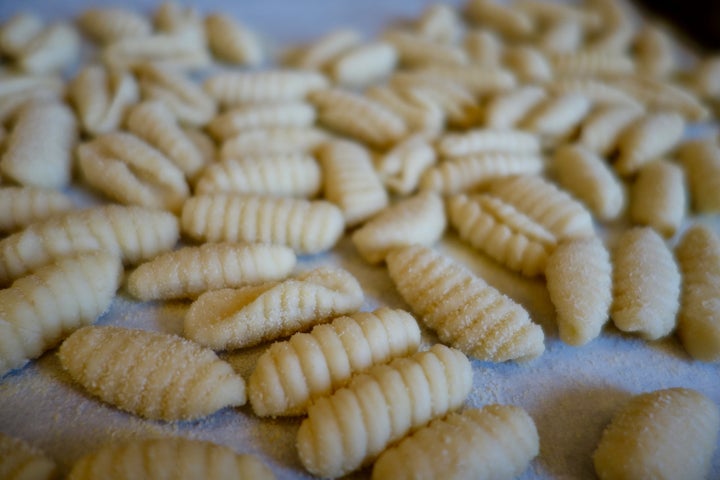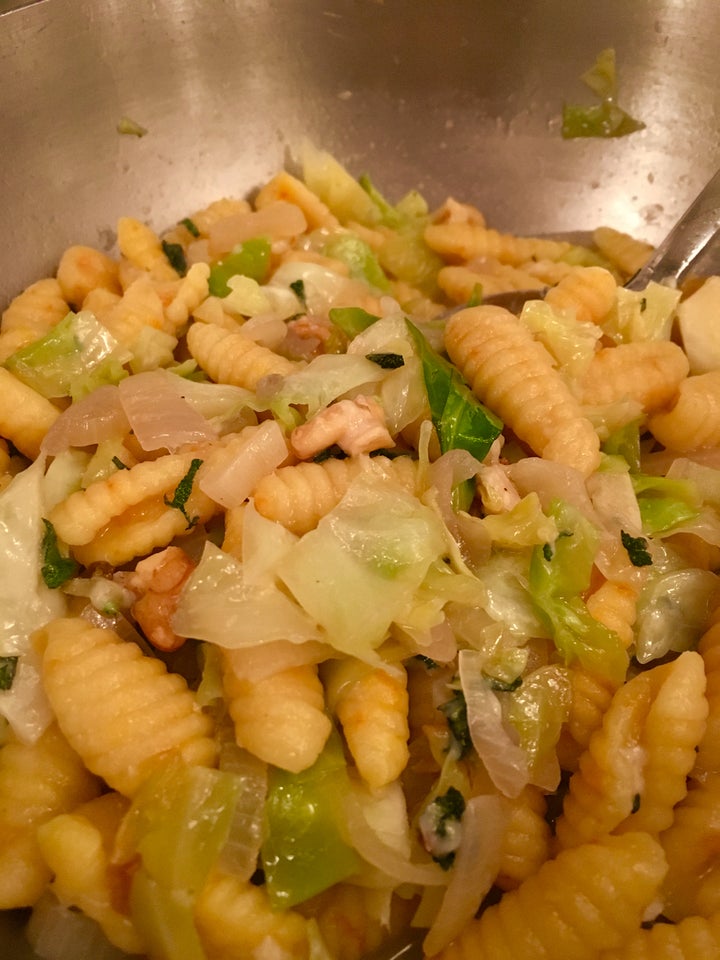When it comes to wheaty chewiness, there’s no pasta like the dense, thick flour-and-water forms hand-made in places like Puglia and Sardinia, things such as orecchiette, cavatelli and saffron-scented malloreddus (aka gnocchetti sardi). No silky, eggy elegance as in wealthier parts of Italy: just synergy between textural density and the flavor of grain.
They are particularly versatile and can be eaten with hearty tomato-and-meat-based ragùs of many kinds, with olive-oil-cooked leafy greens like Swiss chard or Tuscan kale (cavolo nero) – or with lighter brothy sauces made upon seafood or vegetables.
You can buy any of these shapes dried, and they’re good. Or you can look at YouTube and find out how to make your own, a task which – believe me – is endless fun. Decent-looking orecchiette are not easy to learn from a video, but the others almost make themselves once you see the technique. Cavatelli or malloreddus can be made right on the kitchen counter or on a cutting board, though they will then lack the characteristic ridges; for less than five dollars, though, you can do it right and buy a wooden gnocchi board (or two - or more: Jackie and I like to work together on this, and we’ve been known to get dinner guests involved too).
After much tinkering, I’ve settled on these ingredients for four main-course portions: 200 g (around 1-1/2 cups) bread flour (all-purpose is okay), 100 g (a generous 1/2 cup) semolina, a little salt and roughly 150 ml (5 fl oz) room-temperature water, to form a dough that is smooth and pliable, but not at all sticky – again, look at videos to get a good idea of how it should handle, and remember that the dough must rest for at least 20 minutes before you form the pasta. I’m not claiming to be entirely authentic, but I call them cavatelli if I use plain water and malloreddus if I color and flavor the water with saffron. Make them just before eating, or a few hours in advance – or freeze them on a tray (so they don’t stick together) then transfer them to a plastic bag and keep them in the freezer for another time. They’re very forgiving.
The farmers’ markets here in New York still offer several varieties of cabbage that even in late February taste delicious and are in good shape – though they get smaller by the week as the farmers strip limp leaves from the outer layers. And cabbage is wonderful with sturdy pasta (I described a fine dish of buckwheat noodles and cabbage some years ago). Here’s the dish I’ve made a couple of times recently – and will make again in the spring and summer, when sweet young cabbage and ripe tomatoes make their appearance.
For four portions: Start by roasting at least a cup of shelled walnuts in a 325º F (165º C) oven, stirring and checking every five minutes until they smell toasty. Coarsely chop two handfuls of these and save the rest for other uses, which can include eating with ricotta and honey. You can do this days ahead.
While a pot of salted water for the pasta is coming up to the boil, warm a few tablespoonsful of olive oil in a wide saucepan and sweat a large shallot, finely chopped; half a medium clove of garlic, minced; and a little Italian speck or prosciutto sliced then and cut crosswise into strips (optional but recommended, especially the lightly smoked speck). Season with salt. Core a piece of green cabbage or Savoy cabbage weighing about 12 oz (340 g) and cut it into wedges then crosswise into half-inch (1.25 cm) strips. When the shallot is tender but not browned, add the cabbage and a few slivered sage leaves and stir to coat with oil. Cook, stirring, for half a minute, then add about 2/3 cup (160 ml) vegetable stock and two tablespoons of simple tomato sauce – or canned tomatoes crushed by hand. Check for seasoning and simmer until the cabbage is cooked but not too soft – this could be a matter of a minute or two for thin-leafed Savoy, or it could take four or five for a tougher variety.
Boil your pasta for five or six minutes until it no longer tastes of raw flour but is still chewy, then drain it and add it to the cabbage mixture, stirring over heat to combine and allow the pasta to drink in some of the sauce; add a little more vegetable stock if needed: this must not be dry. Finish with grated pecorino, a little more sage and the two handfuls of chopped walnuts. If you want to season the dish with pepper, be miserly about it.
The pasta and cabbage make this a most satisfying main course; yet, because of the vegetable-stock-based sauce, a half portion makes a surprisingly light starter.

Saffron-colored and -flavored malloreddus, freshly made.

Without the saffron, let’s call them cavatelli

Malloreddus with cabbage, nearly done

Malloreddus with cabbage and walnuts